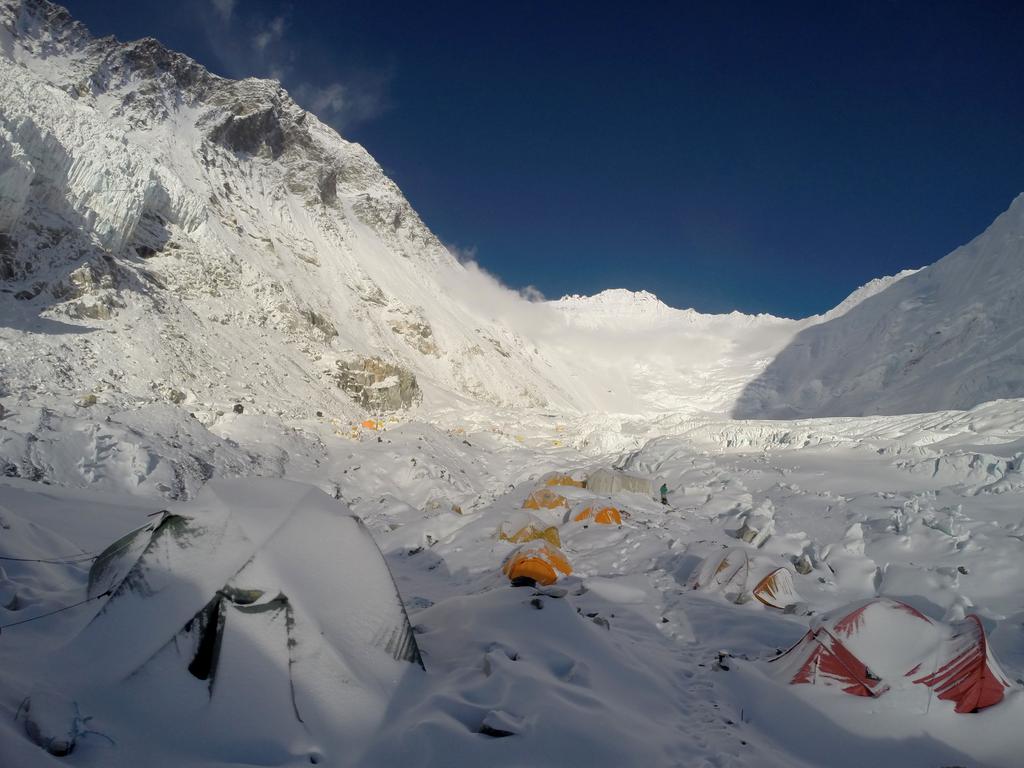Huge warning for mountaineers and trekkers during Mount Everest spring climbing season
Mountaineers and trekkers will swarm the Himalayas over the next few months — but to say there will be challenges is an understatement.
Hundreds of mountaineers and trekkers will be rescued during the 2024 spring climbing season in the Himalayas.
Last year, a record number of climbing permits were distributed, several climbing records were set, and, unfortunately, there was also a record number of fatalities.
For the 12th consecutive year, Global Rescue will deploy a team to Nepal to arrange rescue operations, including helicopter and ambulance transports, hospital admissions and provide care for those admitted.
As an experienced high-altitude mountaineer with multiple successful ascents in the Himalayas, Europe, South America and Africa, I will be part of the operations team that is expected to handle more than a hundred high-altitude rescues in the Himalayas.

High-altitude pulmonary oedema (HAPE), frostbite, gastrointestinal trouble, high-altitude cerebral oedema (HACE), snow blindness and many other ailments will challenge climbers and trekkers at every step, uphill and down.
An average day for the deployment team is anything but normal. During the two-month Mount Everest spring climbing season, there will usually be several rescue operations performed each day, keeping the deployment team busy from 5am until 11pm.

The on-the-ground team of medical and rescue operations experts often performs up to 25 rescues a day.
Recovering member climbers and trekkers require much more than a mountain chopper rescue to bring them to safety. The deployment teams are in multiple areas to support individual members throughout their rescue, transport, recovery and safe return home.
We have deployment team members stationed at the Kathmandu airport co-ordinating helicopter operations. Others are in Lukla preparing to receive rescued people from the mountains and to assist with their medical needs.

High-altitude pulmonary oedema (HAPE), frostbite, gastrointestinal trouble, high-altitude cerebral oedema (HACE), snow blindness and many other ailments will challenge climbers and trekkers at every step, uphill and down.
A third set of on-the-ground operations teammates visit and support hospitalised Global Rescue members in local medical facilities, assisting them on the next steps in getting home safely.

Avalanches are always a risk
Rescue operations following an avalanche are complicated due to the instability of the ground, making efforts volatile. Ascents and descents by climbers are attempted during the time of day when avalanche risk is lowest.
The weather in the mountains is extreme and can change quickly. The on-the-ground Global Rescue team monitors weather and receives daily reports from our helicopter providers to help establish the efficacy and safety of any helicopter rescue.


There are times when adverse weather can prevent or delay helicopter flights. At these times we rely on ground rescue or have members shelter in place until the weather clears.
Participation in mountaineering, trekking and other high-altitude activities has seen rapid increases in recent years. There were record-breaking numbers of both climbers and rescues in 2023, and indications point to those numbers increasing in 2024.


Expedition leaders have noted that many climbers are avoiding Mount Everest and focusing on other 8000+ metre mountains to avoid the crowds. That has led Global Rescue to send a medical and rescue operations team to Aconcagua, the highest mountain in South America and an increasingly popular high-altitude climb for newer and experienced mountaineers.
For the 2024 Aconcagua climbing season, Global Rescue medical operations and rescue personnel were on the ground from January through mid-February to support climbing and trekking members. The deployment team included high-altitude physician specialists, emergency nurse personnel and a wilderness certified paramedic.


More Coverage
And while it may not reach the towering peaks of the Himalayan or Karakoram ranges, make no mistake: Aconcagua is not to be taken lightly and preparation is imperative. More than any other issue, a lack of proper acclimatisation is what triggers the need for most rescues from the big mountains, including Aconcagua.
Because participation in mountaineering, trekking and other high-altitude activities has seen rapid increases in recent years, we’re increasing our capabilities to provide emergency services in more regions, committing to longer deployments of our medical operations personnel, and extending our infield rescue operational durations.
Dan Stretch, a seasoned high-altitude climber, is the Global Rescue senior manager medical operations and runs Global Rescue’s Nepal operations during the Mount Everest climbing seasons. He has co-ordinated hundreds of evacuations and crisis response operations. He graduated from the University of Hertfordshire with a BS in Paramedic Science.





